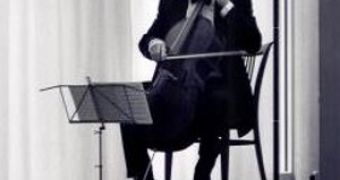Thanks to a new innovation from the University of Leeds (UL), musicians can now benefit from an incredible new 3D multimedia tool, designed specifically to help them improve their playing technique, by analyzing the way they move during play. The new device makes use of advanced sensor technology, which tracks and monitors the motion of key points on a musical instrument and on the player's body, to generate a computer image of the scene and allow musicians, teachers or viewers to analyze exactly what has made greatness possible, or what has gone wrong during a performance.
“Learning to play an instrument is a physical activity. If a student develops a bad posture early on, this can be potentially very damaging to their career and our system can help teachers to easily identify problems. Similarly, the system enables experienced musicians to make small changes in gesture and posture that can improve the sound they make,” UL Faculty of Engineering and School of Music scientist Dr Kia Ng, who has been mainly responsible for the development of the new multimedia system, says.
The new device, dubbed i-Maestro 3D Augmented Mirror (AMIR), will be a huge step forward in music analyses, from the average cameras musicians now use to investigate their own playing style. Watching recordings of previous performances is one of the best ways for a singer or an instrument player to correct his or her technique. For teachers, analyzing their pupils' movements, string by string or hit by hit, would be an invaluable tool in pinpointing the exact problem, and working on fixing it.
“Many musicians already use video recordings of their performance to analyze technique, but this only provides a 2D image. The 3D image and analysis provided by AMIR will be of immense value to musicians and teachers alike,” Ng adds. “What makes a great sound is difficult to analyse, but with technique, some things come down to basic physics. If the bow is held perpendicular to the string and parallel to the bridge, the minimum effort will produce the maximum result. Our system can measure this and show musicians exactly when their technique becomes less effective,” the scientist explains.
Thus far, the system is only fit for bowed instruments, such as the violin or the cello, but, in the future, Ng plans to make it readily available for other devices as well. However, she points out that AMIR, which features some 12 high-speed cameras capable of shooting 200 frames per second and a complicated computer software that generates the 3D model, could cost anywhere between 5,000 pounds and 100,000 pounds ($7,200 to $145,000).

 14 DAY TRIAL //
14 DAY TRIAL //